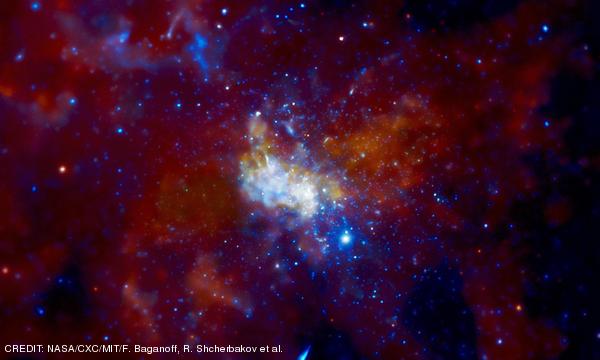
In the show this time, Dr. Rene Breton talks to us about his work measuring the mass of binary neutron stars, Dr. Malcolm Gray tells us about objects known as astrophysical masers in this month's JodBite and your astronomical questions are answered by Dr. Iain McDonald in Ask an Astronomer.
JodBite with Dr. Malcolm Gray
Dr. Malcolm Gray is a researcher and member of academic staff at the University of Manchester. Malcolm studies interstellar objects known as masers. These objects are microwave and radio equivalents of lasers. Masers allow us to study many types of objects throughout the Universe, from comets, newly-forming to very old stars out to distant galaxies. Malcolm also tells us about the book he has written all about masers.
Interview with Dr. Rene Breton
Christina spoke to Dr. Rene Breton from the University of Southampton about measuring pulsar masses in redback and black widow systems. These systems are neutron star binaries where the neutron star is being orbited by a small star. The neutron star is very powerful and energetic, heating up its companion. This makes one side very hot and bright and the other very cool, which distorts the star's surface and even blasts away the nearer surface. Dr. Breton goes on to discuss how the mases of these neutron stars are measured through colour variations in optical observations as well as discussing their light curves and orbits.
Ask an Astronomer
Dr. Iain McDonald answers your astronomical questions:
- First question is from Paul Walsh: "It occurred to me that, from our point of view, the observable universe is ~13-14bn years old. Could it, in fact, be much older (but we just can't see it)?"
- Next question is from Cas Liber who asked: "I recall as a kid we'd always fear that it'd be Betelgeuse or some other red giant that was most likely to go supernova... I wondered if experts on stellar evolution had pet stars they kept an eye on... which stars should we be watching?"
- Final question for this month is from Philip le Riche: "I've just watched a simulation of the merger of the Milky Way and Andromeda in around 5 billion years. I wonder how much longer it will be before the super-massive black holes merge, and what the effects will be when it happens?"
Odds and Ends
A team of astronomers have observed the brighest X-ray flare ever seen from the black hole at the centre of our Galaxy. The flare was seen toward the black hole (also known as Sagittarius A*) using the Chandra X-ray telescope and was recorded to be 150 times brighter than any recorded flare seen before. It is hoped that bright flares such as this will help pin down exactly what is causing the regular flares seen from the Galactic Centre.
Binary systems are found at all stages of stellar evolution. A former Jodcast member, Dave Jones, observed a planetary nebula with very collimated jets coming out from the inner core of the object. Models predict that this planetary nebula harbours a binary system of 2 white dwarfs inside.
Astronomers from Swinburne University in Melbourne have observed the second and third examples of what are believed to be pair instability supernovae - stellar explosions marking the end of the lives of stars that are some 150-250 times more massive than our Sun. These 'superluminous supernovae' are caused by the decay of photons into electron-positron pairs in the cores of collapsing stars, and can be seen across the Universe. One of the supernovae is at a record redshift of 3.9, meaning that it occurred 12 billion years ago and is the most distant known supernova. The Swinburne team made their detections using the Canada-France-Hawaii Telescope and the Keck I Telescope, and now hope to see the deaths of the first generation of stars, which originally seeded the Universe with elements heavier than hydrogen and helium.
Show Credits
| JodBite: | Dr. Malcolm Gray and George Bendo |
| Interview: | Dr. Rene Breton and Christina Smith |
| Ask An Astronomer: | Dr. Iain McDonald and Liz Guzman |
| Presenters: | Adam Avison, Liz Guzman and Mark Purver |
| Editors: | Mark Purver, Adam Avison, Liz Guzman and Indy Leclercq |
| Producer: | Adam Avison |
| Segment Voice: | Cormac Purcell |
| Website: | Adam Avison and Stuart Lowe |
| Cover art: | An image of Sagittarius A* taken with the Chandra X-ray telescope. CREDIT: NASA/CXC/MIT/F. Baganoff, R. Shcherbakov et al. |
[an error occurred while processing this directive]